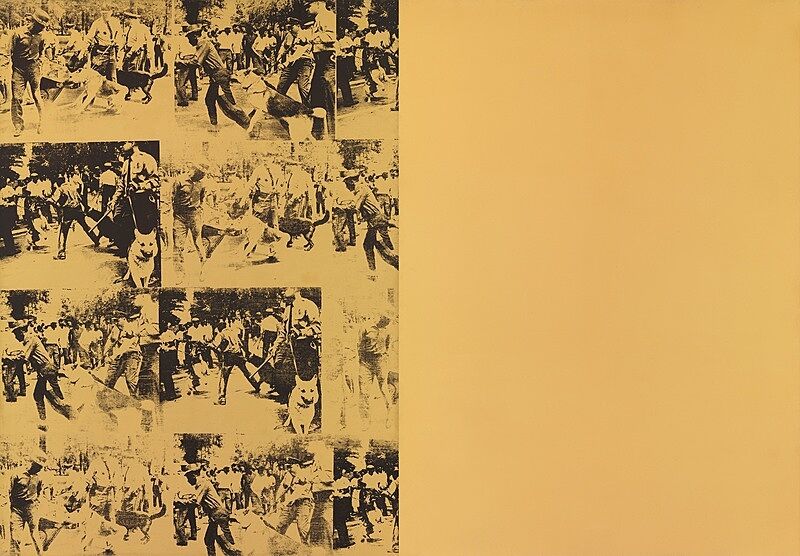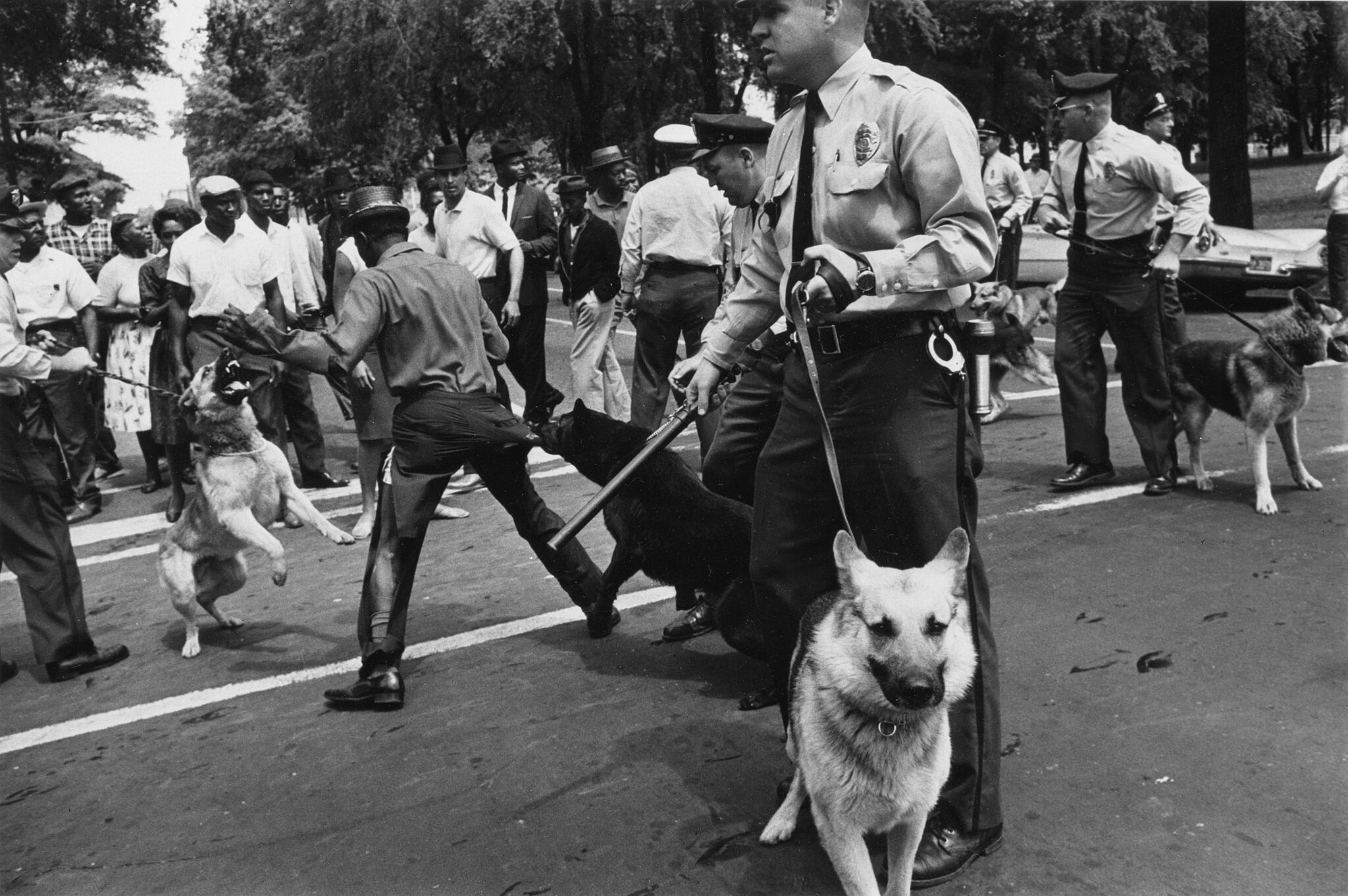Andy Warhol— From A to B and Back Again | Art & Artists
Nov 12, 2018–Mar 31, 2019
Andy Warhol— From A to B and Back Again | Art & Artists
Death and Disaster
5
Warhol’s Death and Disaster works can be seen as monumental history paintings—a genre developed to honor great men and their deeds—but Warhol transforms the tradition in order to speak to the anonymity of disaster and its victims and to the contradictions of life in 1960s America. Drawing on the pictorial magazines of the period—Life, Look, Time—Warhol featured images that captured the spectacle of violence as refracted through the lens of the media: suicides, car crashes, electric chairs, acts of police brutality, and poisonings.
“My show in Paris is going to be called 'Death in America.' I’ll show the electric-chair pictures and the dogs in Birmingham and car wrecks and some suicide pictures.”
Mustard Race Riot, 1963
Mustard Race Riot serially reproduces Charles Moore’s now-famous photographs of an African American civil rights demonstrator under assault by white police officers in Birmingham, Alabama. Warhol excerpted the images from the May 17, 1963, issue of Life magazine, where they were part of Moore’s photo-essay exposing the vicious tactics sanctioned by the Birmingham police force against nonviolent activists pushing to end racial segregation. Recontextualized, cropped, blurred, and repeated within Warhol’s painting, these images not only portray a specific traumatic moment but also come to represent America’s long and continuing history of racial injustice and its catastrophic effects on Black lives. Describing the original photos in a 2005 interview, Moore explained “I don’t want to fight with my fists. I want to fight with my camera.”


